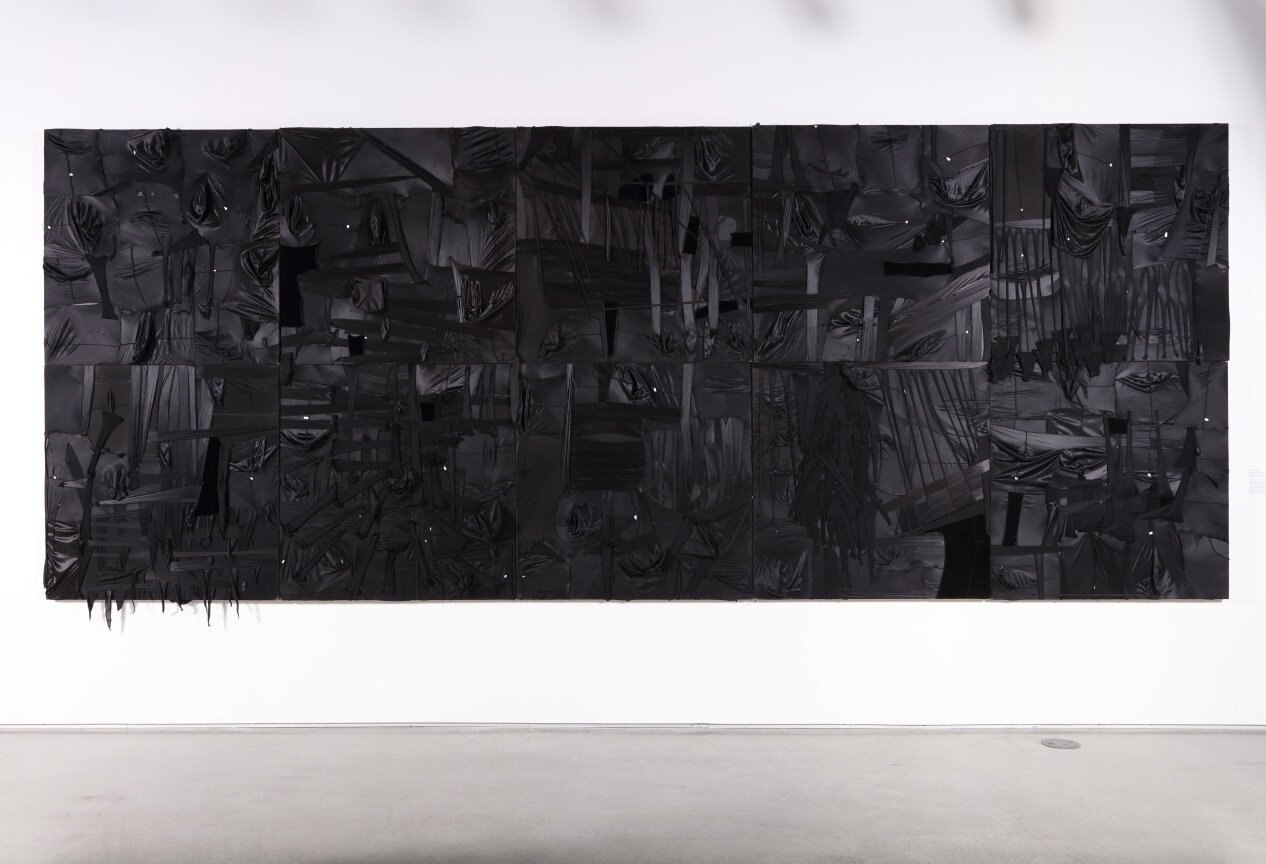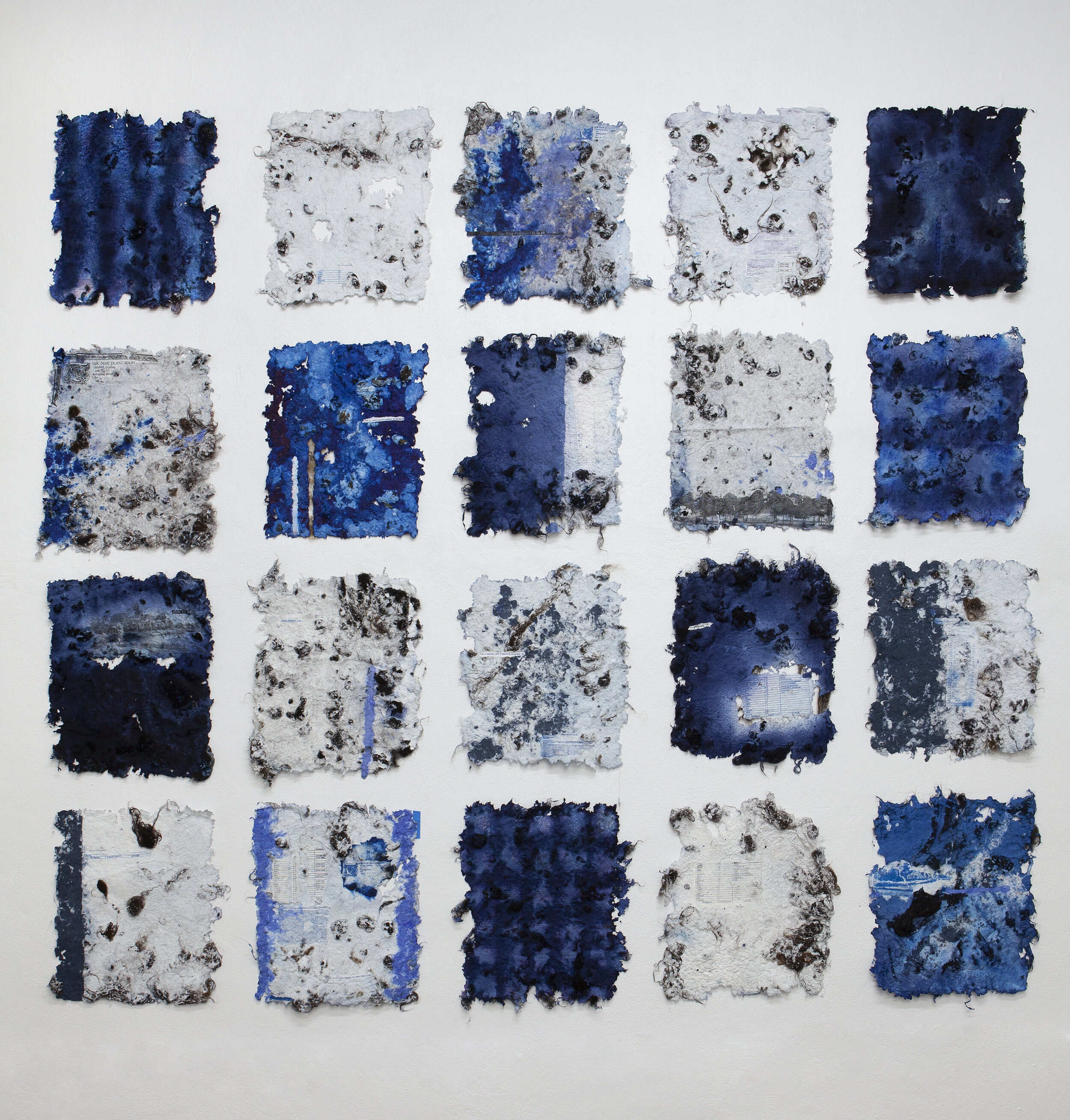Curated by Michael Mosby, i.de.al.is.tic brings together the work of artists Anthony Olubunmi Akinbola, Sean Desiree, and Marcus Leslie Singleton. The exhibition explores each artist’s relationship to the concept of idealism—the unrealistic aim for perfection. Singleton deals with the everyday, while Akinbola abstracts the concept of a Black identity, and Desiree objectively describes the inherent beauty in public housing units. In each of these artist’s practices there is an acceptance of imperfection, and through this resolve a true picture of a complex Black narrative emerges. Mosby states, “We all yearn for perfection. Perhaps this desire is spawn from the failures of our day to day. We seek refuge from this desire in people, places, and things. However only in art is there a symbiosis between the idealistic and its shadow.”
An ideal is a perfect image existing in the mind or on a divine plane, separate from the everyday world, and complete in and of itself. Idealism, stylistically associated with Eurocentric Neoclassical or Beaux-Arts traditions, is employed in the monuments that still stand in public spaces, honoring Confederate “heroes” and enslavers. How do artists create new ideals to counter oppressive ones? The three artists in this exhibition, Anthony Olubunmi Akinbola, Sean Desiree, and Marcus Leslie Singleton, offer anew approach to the notion of idealization, one rooted in everyday Black life. Each of their processes, some created in response to trauma, involve picking up the pieces and putting them together—a process analogous to curator Michael Mosby’s title for the exhibition in which the word “idealistic” does not appear complete all at once, but is pieced together from a series of sounds sequenced together.
We can think of Mosby’s title and these three artists’ works in terms of collage—not literal collage, rather collage as a method of responding to the world. Such collage strategies have a long history in Black cultural production. Cultural theorist bell hooks writes about the imperative for Black folks to create beauty in their homes as an oppositional and life-affirming practice of survival within a white-supremacist society. Raised in rural Kentucky, she recounts her grandmother’s quiltmaking practice and her spectacular “crazy quilts,” crafted from scraps of fabric left over after quilting for white families, which beautified her home and gave warmth and comfort to family members. Picking up the pieces, Black women quilters forged a new ideal to create an aesthetic that is, in bell hooks’s words, “strange and oppositional.”
Anthony Olubunmi Akinbola creates an oppositional aesthetic by stitching durags together to make mural-sized monuments celebrating and mourning Black life. The literal process of stitching in his work again recalls the process of quilting. The innumerable durags, specifically associated with Black hair and identity, come together as a community, spilling into the viewer’s space and defiantly affirming the beauty of Black cultural stylings unrecognized by white supremacist culture. Black hair is similarly the theme in his intimate sculptures, composites of found objects that include wave brushes and wooden Yoruba figures. These fractured figures, with heads and bodies cleanly cut and spliced together with the wave brush parts, pick up the pieces and stand tall in new states of becoming.



















